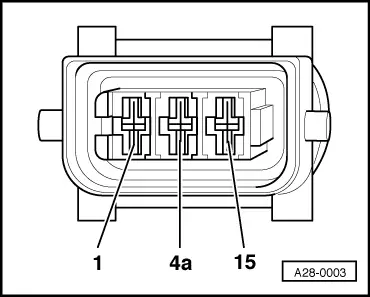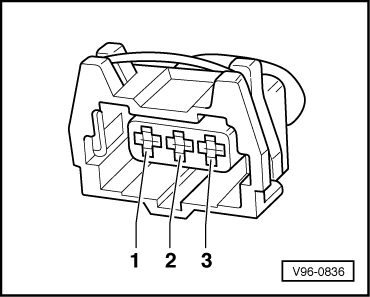|
Checking ignition system
Checking ignition coils
Note:
Misfiring is monitored by the self-diagnosis for vehicles which fulfil the emission standard EU III. This means that a cylinder which is not firing is stored in the fault memory together with the appropriate cylinder number. The advantage of this is that fault finding can be initiated from e.g. a specific cylinder in the case of fault. Therefore interrogate the engine control unit before starting this test.
Test conditions
-
● No faults relating to injector(s) stored
Identify an inoperative or misfiring cylinder as follows:
-
‒ Disconnect connectors from the injectors in sequence with the engine running, and observe how the engine runs.
-
‒ Compare the spark plugs of all cylinders with each other and check for soot on the electrodes.
If the defective cylinder has been identified:
-
‒ Connect multimeter (resistance measurement range) to spark plug connector.
Note:
The spark plug connector can be unplugged from the ignition coil.
- Specification: approx. 2 kω
If specification is not attained:
-
‒ Replace the spark plug connector.
If specification is attained:
-
‒ Replace the spark plug of the defective cylinder with one from another cylinder. First perform visual inspection of spark plug for possible damage, e.g. cracks in ceramic body of spark plug.
-
‒ If the fault now occurs at the other cylinder, renew the spark plug.
If the fault remains in the same cylinder:
-
‒ Replace the ignition coil from the defective cylinder with one from another cylinder.First perform visual inspection of ignition coil for damage (ignition coil may have cracked (micro crack) or split open).
-
‒ If the fault now occurs at the other cylinder, renew the ignition coil.
If the fault remains in the same cylinder:
-
‒ Unplug the connector from the ignition coil.
| 



